“The amateurs discuss tactics: the professionals discuss logistics.” — Napoleon Bonaparte
[Editor’s Note: Sustaining a deployed force executing combat operations is a challenge. Geographical distance further compounds this challenge, especially when the theater of operations is half a world away. Logarithmically complicating this challenge is engaging a near peer adversary with global reach who enjoys advantages in time, distance, and magazine depth, in enduring Large-Scale Combat Operations.
In today’s post, Mad Scientist Laboratory continues its exploration of the Operational Environment on behalf of the Army, addressing what GEN Frederick M. Franks (USA-Ret.), former Commanding General, TRADOC, and VII Corps Commander during Operation Desert Storm, called “… the hard part of fighting a war.” Read on to see what we’re learning about contested logistics from the on-going war in Ukraine and the associated ramifications for a potential conflict with China in the Indo-Pacific Region!]
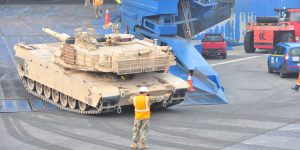 Success in Large-Scale Combat Operations (LSCO) and protracted conflict depends on robust logistics support. Forward posturing requisite quantities of war stocks and ensuring the continued and sustained flow of logistics into the theater enables field commanders to execute their plans of operation. Conversely, inadequate sustainment hampers operations and restricts commanders’ warfighting flexibility — restricting their ability to launch offenses and potentially limiting them to defensive operations.
Success in Large-Scale Combat Operations (LSCO) and protracted conflict depends on robust logistics support. Forward posturing requisite quantities of war stocks and ensuring the continued and sustained flow of logistics into the theater enables field commanders to execute their plans of operation. Conversely, inadequate sustainment hampers operations and restricts commanders’ warfighting flexibility — restricting their ability to launch offenses and potentially limiting them to defensive operations.
Delivering ready combat formations is one of four Chief of Staff of the Army priorities. Included in that priority is galvanizing the U.S. industrial base to build up the nation’s magazine depth required to support enduring LSCO. It also means that the supply chains and maintenance support commensurate with such actions are protected and functioning uninterruptedly, as they will be high-value targets for our adversaries.
Russia’s Special Military Operation in Ukraine
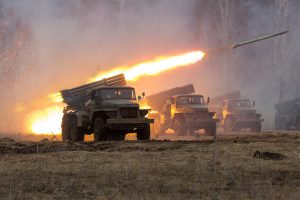
The on-going conflict in Ukraine illustrates the foundational aspect of logistics to LSCO and protracted conflict. At the height of the conflict in late 2022, Russia was expending 20,000 artillery rounds a day. As Russian logistics nodes and main supply routes were actively sought out and targeted by Ukrainian fires, that daily rate of fire dropped precipitously to 5,000 rounds a day. Sustained Russian rates of fire and attrition from Ukrainian fires forced Russia to expand its domestic production of CLASS V (i.e., ammunition), with Russia reportedly now producing about 250,000 artillery rounds per month, or approximately 3 million rounds a year. Russia also sought to acquire artillery ammunition from North Korea and Iran — as of February 2024, North Korea had provided Russia with 6,700 shipping containers, potentially totaling over 3 million 152mm artillery shells.
In LSCO, high expenditure rates of all classes of supply, the interdiction of supply routes (including Ground and Sea Lines of Communication [GLOCs/SLOCs]), and the targeted destruction of logistics nodes (including 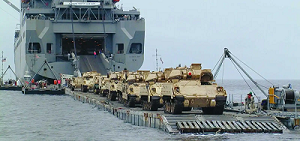 Sea and Airports of Debarkation [SPODs/APODs], staging areas, Ammunition Supply Points [ASPs], and fuel depots) will challenge U.S. force sustainment. Logistics infrastructure will remain high-value targets, including arms depots, fuel supplies, power grids, and transportation networks. Our adversaries will seek to disrupt main supply routes at key choke points — bridges, tunnels, and railway junctions. Minimizing vulnerabilities to these routes will be vital to sustaining operations. Given battlefield transparency, supply vehicles and convoys will be acquired, identified, and tracked to re-supply points for targeting and subsequent destruction by fires, attriting both the logistics and associated means of transportation and distribution.
Sea and Airports of Debarkation [SPODs/APODs], staging areas, Ammunition Supply Points [ASPs], and fuel depots) will challenge U.S. force sustainment. Logistics infrastructure will remain high-value targets, including arms depots, fuel supplies, power grids, and transportation networks. Our adversaries will seek to disrupt main supply routes at key choke points — bridges, tunnels, and railway junctions. Minimizing vulnerabilities to these routes will be vital to sustaining operations. Given battlefield transparency, supply vehicles and convoys will be acquired, identified, and tracked to re-supply points for targeting and subsequent destruction by fires, attriting both the logistics and associated means of transportation and distribution.
Sustainment at the Tip of the Spear

Logistics nodes must be dispersed and covered/concealed to ensure survivability. However, dispersal reduces efficiency in supplying forces. Additive manufacturing — 3D printing — is helping to address CLASS IX (i.e., repair parts) logistics challenges in Ukraine. Russia and Ukraine are both employing 3D printing to meet their respective demand signals for the thousands of Unmanned Aerial Vehicles (UAVs) expended each month. Deployable, containerized 3D printers are also fabricating battle damage repair parts closer to the front lines, facilitating the faster return of armored fighting vehicles to combat.
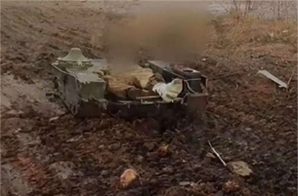
Due to extremely high casualty rates in LSCO, medical logistics will also be largely contested. Massed tube and rocket artillery, missile, and UAV strikes will result in high casualty situations. Medical logistics will likely be plagued with slow evacuation times, with the potential for casualty and medical evacuation (CASEVAC/MEDEVAC) assets to be viewed as legitimate targets. Air transport may not always be a viable medical evacuation option, requiring the use of other vehicles and equipment for transport and by result, decreasing the number of ready systems and troops. Russia has employed Unmanned Ground Vehicles (UGVs) to deliver CLASS V and CLASS VIII (i.e., medical supplies) logistics support to units on the front lines. Russia has also employed these same UGVs to evacuate casualties back to aid stations. Battlefield automation will increasingly play a major role in delivering vital logistics on increasingly lethal 21st century battlefields.
Power Projection Attack Surfaces
Adversaries will target troop deployments as well as the supporting commercial systems. They will use cyber and Supervisory Control and Data Acquisition (SCADA) attacks to degrade or disrupt the infrastructure and networks underlying our ability to deploy forces — targeting units as well as individual Leaders and Soldiers at the granular level — including movement communications, troop lodging and airfare, and even personal bank accounts. Our adversaries will seek to delay or disrupt our ability to project forces — from fort to port to theater — to degrade our ability to fight.
-
-
 Cellular modems were recently discovered in China’s ZPMC-manufactured ship-to-shore (STS) crane components at a U.S. seaport, while a cellular modem was discovered in another U.S. seaport’s server room that houses STS cranes’ firewall and networking equipment — presenting cyber-exploitable entry points to critical logistics assets.
Cellular modems were recently discovered in China’s ZPMC-manufactured ship-to-shore (STS) crane components at a U.S. seaport, while a cellular modem was discovered in another U.S. seaport’s server room that houses STS cranes’ firewall and networking equipment — presenting cyber-exploitable entry points to critical logistics assets.
-
-
-
-

Fast Sealift Ships SS Denebola and SS Antares, Baltimore, 2013 / Source: EllenM1 / CC BY via MaritimeExecutive.com While the closure of the Port of Baltimore last week was due to an unfortunate accident, it illustrates the vulnerability of the nation’s power projection infrastructure. Four of the Maritime Administration’s Ready Reserve Force (RRF) vessels are stuck berth-side while the Baltimore channel is being cleared of debris, including two of the nation’s eight Fast Sealift Ships (shown here).
-
-
These are just two examples of attack surfaces our adversaries could exploit to disrupt our power projection capabilities at Sea Ports of Embarkation (SPOEs).
Implications for Conflict with our Pacing Challenge
 Any extended conflict with China in the Indo-Pacific Region will likely challenge sustainment efforts from our homeland – it is 6,890 miles from the ports in San Diego, CA to Taipei, while the Taiwan Strait is only 81 miles at its narrowest, granting China advantages in both time and distance. This geographic challenge will further be compounded by adversarial cyber and kinetic fires.
Any extended conflict with China in the Indo-Pacific Region will likely challenge sustainment efforts from our homeland – it is 6,890 miles from the ports in San Diego, CA to Taipei, while the Taiwan Strait is only 81 miles at its narrowest, granting China advantages in both time and distance. This geographic challenge will further be compounded by adversarial cyber and kinetic fires.
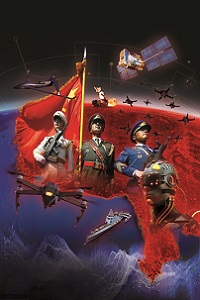 The U.S. Army’s logistics system is vulnerable to enemy attack across all domains and at global ranges. China has the capability to target logistics infrastructure in the United States, confusing deployment processes and using cyber-attacks on transport networks and systems during a run-up to conflict. Additionally, the competition phase may transition to conflict immediately, leaving no crisis period to begin force flow and the Time-Phased Force Deployment Data (TPFDD) process. Once in theater, layered stand-off, A2/AD, cyber, information, counter-space, and sophisticated reconnaissance/strike complexes will challenge both maneuver and sustainment at all echelons.
The U.S. Army’s logistics system is vulnerable to enemy attack across all domains and at global ranges. China has the capability to target logistics infrastructure in the United States, confusing deployment processes and using cyber-attacks on transport networks and systems during a run-up to conflict. Additionally, the competition phase may transition to conflict immediately, leaving no crisis period to begin force flow and the Time-Phased Force Deployment Data (TPFDD) process. Once in theater, layered stand-off, A2/AD, cyber, information, counter-space, and sophisticated reconnaissance/strike complexes will challenge both maneuver and sustainment at all echelons.
To mitigate an adversary’s ability to reach and disrupt the U.S. Army’s logistics operations, the defense of the homeland will be an integral part of conducting LSCO. Protecting critical infrastructure, information networks, and the public’s confidence will aid greatly in enabling U.S. Army operations.
If you enjoyed today’s post, check out the first four in this Operational Environment series:
Unmanned Capabilities in Today’s Battlespace
The Operational Environment’s Increased Lethality
WMD Threat: Now and in the Future
… as well as the TRADOC G-2‘s Operational Environment Enterprise web page, brimming with information on the Operational Environment (OE) and how our adversaries fight, including:
Our China Landing Zone, full of information regarding our pacing challenge, including ATP 7-100.3, Chinese Tactics, BiteSize China weekly topics, People’s Liberation Army Ground Forces Quick Reference Guide, and our thirty-plus snapshots captured to date addressing what China is learning about the Operational Environment from Russia’s war against Ukraine (note that a DoD Common Access Card [CAC] is required to access this last link).
Our Russia Landing Zone, including the BiteSize Russia weekly topics. If you have a CAC, you’ll be especially interested in reviewing our weekly RUS-UKR Conflict Running Estimates and associated Narratives, capturing what we learned about the contemporary Russian way of war in Ukraine over the past two years and the ramifications for U.S. Army modernization across DOTMLPF-P.
Our Running Estimates SharePoint site (also requires a CAC to access), containing our monthly OE Running Estimates, associated Narratives, and the 2QFY24 OE Assessment TRADOC Information Paper (TIP).
… and the following related Mad Scientist Laboratory posts:
Sinews of War: Innovating the Future of Sustainment by then MSG Donald R. Cullen, MSG Timothy D. Roberts, MSG Jessica Cho, and MSG Johanny Ortega
The 4th Industrial Revolution, Additive Manufacturing, and the Operational Environment by Jeremy McLain
War Laid Bare, by Matthew Ader
In the Crosshairs: U.S. Homeland Infrastructure Threats
Weaponized Information: One Possible Vignette
The Most Consequential Adversaries and associated podcast, with GEN Charles A. Flynn
Volatility in the Pacific: China, Resilience, and the Human Dimension and associated podcast, with General Robert Brown (USA-Ret.)
How China Fights and associated podcast
China’s PLA Modernization through the DOTMLPF-P Lens, by Dr. Jacob Barton
Three Dates, Three Windows, and All of DOTMLPF-P, China and Russia: Achieving Decision Dominance and Information Advantage, and “No Option is Excluded” — Using Wargaming to Envision a Chinese Assault on Taiwan, by Ian Sullivan
Flash-Mob Warfare: Whispers in the Digital Sandstorm (Parts 1 and 2), by Dr. Robert E. Smith
>>>>REMINDER: Army Mad Scientist wants to crowdsource your thoughts on asymmetric warfare — check out our Operational Environment Wicked Problems Writing Contest.
All entries must address the following topic:
How have innovations in asymmetric warfare impacted modern large scale and other combat operations, and what further evolutions could take place, both within the next 10 years and on towards mid-century?
We are accepting three types of submissions:
-
-
- 1500-word Non-Fiction Essay
-
-
-
- 1500-word Fictional Intelligence (FICINT) Story
-
-
-
- Hybrid 1500-word submission incorporating a short FICINT vignette, with a Non-Fiction Essay expounding on the threat capabilities described in the vignette
-
 Anyone can participate (Soldiers, Government Civilians, and all global citizens) — Multiple submissions are encouraged!
Anyone can participate (Soldiers, Government Civilians, and all global citizens) — Multiple submissions are encouraged!
All entries are due NLT 11:59 pm Eastern on May 16, 2024 at: madscitradoc@gmail.com
Click here for additional information on this contest — we look forward to your participation!
Disclaimer: The views expressed in this blog post do not necessarily reflect those of the U.S. Department of Defense, Department of the Army, Army Futures Command (AFC), or Training and Doctrine Command (TRADOC).



